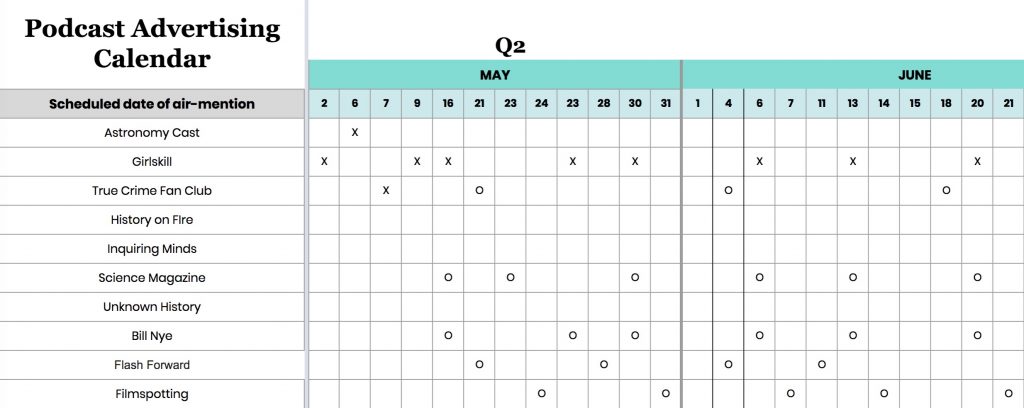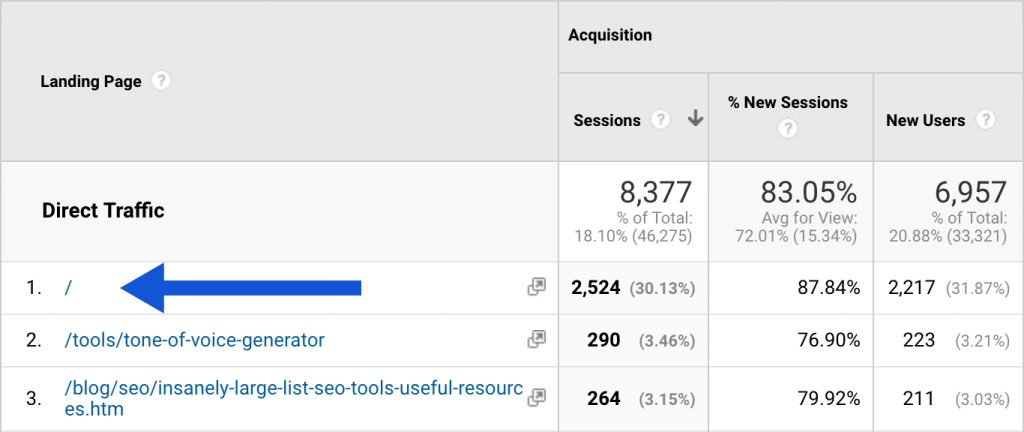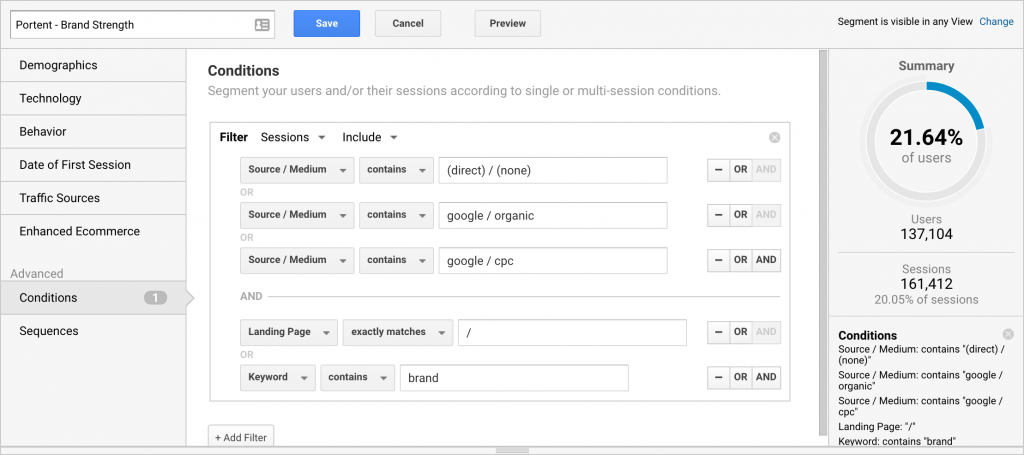Unlike many of the old marketing channels that have enormous barriers to entry, every single business can use digital marketing to grow their business.
Even better, the more you put into it, the more you get.
If you’re just starting to explore digital marketing, start with our Beginners Guide to Online Marketing. It covers all the core topics that you’ll need to get going. If you only read one guide, I’d make it this one.
When you’re ready to go deeper, we’ve put together hundreds of guides across the site, including the guides below that cover every aspect of digital marketing.
Marketing Foundations
Digital marketing changes fast but the fundamentals always stay the same.
That’s why I always recommend getting a good understanding of marketing fundamentals first. Once you have completely internalized these core concepts, you’ll be able to quickly stay on top of the tactics as they evolve. It’ll also help you sort through the snake oil and find the advice that truly works.
You’ll be reaping the rewards from these guides for years to come:
- How to Write a Great Value Proposition
- How to Become a Marketer Who Thinks Strategically
- How to Use Surveys to Hook More Customers
- 28 Business-Boosting Marketing Activities You Can Do in 1 Hour or Less
- Why Most Marketing Campaigns Fail Within 3 Months
- 22 Unconventional Marketing Tactics that Always Work
- 26 Marketing Tools for Non-Tech-Savvy Marketers
- 7 Simple Things You Can Do To Fix Your Marketing
- Marketing Framework Guide
- 8 Marketing Ideas to Grow Your Start Up to Mythic Proportions
- How to Become a Marketer Who’s Obsessed with Metrics
- 16 Most Costly Marketing Mistakes I’ve Ever Made
- 25 Ways To Increase Website Traffic
- The Step-by-Step Guide to Building an Audience Before Your Business Launches
- A Step-by-Step Guide to Generating Clients by Writing Case Studies
- The Most Effective Ways to Generate Leads for Your Business
- The Top 9 Marketing Trends
- The Power Of Emotional Marketing
- The Ultimate B2B Marketing Guide
- How to Tell Your Brand’s Story
- Customer Acquisition Strategies That Won’t Break the Bank
- A Step-by-Step Guide to Creating Reader Personas
Marketing Tips and Tricks
In digital marketing, the number of tips and tricks is quite vast.
And with how fast online marketing channels evolve, it’s critical to stay on top of these. If all your competitors figure out a new tactic and you don’t, you’ll quickly get left behind. This is one area that you constantly want to review:
- 27 Marketing Tips That’ll Woo Your Visitors and Win Them Over
- 6 Ways to Generate More Traffic out of Your Images
- How to Do an Online Giveaway That Doesn’t Suck
- How to Apply Lean Marketing to Your Content Based Business
- 7 Huge Sites for Traffic That Marketers Don’t Take Advantage Of
- How to Leverage Black Friday for Your Business
- The Top Customer Engagement Strategies That Generate Sky High Revenue
- How to Use Surveys and Interviews to Generate More Money for Your Business
- Design is Marketing
- How to Effectively Manage Engagement for Stronger Influence
- 8 Powerful Takeaways from Eye Tracking Studies
- 4 Free Marketing Ideas that Most Marketers Miss
- 7 Unconventional Marketing Tactics That Work
- How to Improve Your Alexa Ranking in 30 Days or Less
- How to Run a Profitable Giveaway
- How to Improve Your Marketing with Google Analytics Data
- 5 Ways to Increase Your Pageviews Per Visitor by 23.52%
- Be Laser Focused on Your Customers
- 10 Ways Machine Learning Is Reshaping Marketing
- Why You Shouldn’t Hire a Marketing Consultant
- Why Transparency Is The New Marketing
- The Beginner’s Guide to Mobile Marketing
- 14 Mobile Trends That Are Dominating
- 78 Marketing Tasks You Should Outsource Immediately
- How to Build Hype for a New Product Launch
- The Digital Marketer’s Guide to Programmatic Advertising
- How to Create a Killer Video Promotion to Increase Engagement
- Which of These 3 Case Studies Will Grow Your Sales?
- 7 Marketing Lessons Learned From Acquiring a Startup
- 4 Clever Ways Videos Can Help You Attract Customers
- How to Find ClickBank Products to Promote
Marketing Channels
One of the most important marketing decisions you’ll make is which channel to focus on. I’ve personally worked with businesses that have made it to $1 million in revenue and above using every channel out there.
No single channel is best, it’s all about finding the one that’s the best fit for you.
What about going after multiple channels? Why not get the benefit of all of them?
If you get big enough, yes, you’ll be in every channel eventually. But in my experience, businesses diversify across channels way too early. Especially with online channels, the level of competitive has gotten very high. It’s almost impossible to compete at the highest levels on SEO, social, and paid at the same time. Most marketing teams are only good at one channel which subsidizes the rest.
Personally, I avoid diversifying across channels until I have a good enough brand that can give me an advantage as I scale into other channels. I’ll also start new channels when I’m starting to hit the limits of my first channel.
We have entire sections devoted to SEO, social media, and paid marketing. You’ll find everything you ever wanted to know about those channels.
These guides below will also help you with the channel that you decide to go after:
- How to Find and Test New Marketing Channels
- How Any Digital Business Can Explode Using Word of Mouth Marketing
- How to Use Tumblr To Drive Traffic and Land New Customers
- Get the Word Out With Public Relations
- How to Generate Traffic with this Quora Marketing Strategy
- Want to Know How to Make Influencer Marketing Work?
- How to Use Micro Influencers to Increase Your Product Credibility
- Drive Sales With Affiliate Marketing
- How to Promote Your Event Online Like a Pro
- How to Build Traffic Through Forums
- How You Can Use Remarketing to Close a Business Deal
Marketing Psychology
Marketing psychology is one of the “first principles” in the field of digital marketing. Once you know all the principles and tricks of marketing psychology, every aspect of your marketing will improve. You’ll always know how to improve a campaign, strategy, and ad.
This is one my favorite areas to go deep on:
- How to Integrate Psychology Into Your Marketing
- Complete Guide To Understanding Customer Psychology
- 17 Facts about Search Psychology You Should Know
- The Psychology Of Pricing
- 6 Psychological Principles That Influence Reader Loyalty
- The Psychology Of Color
- How to Avoid Friction Points for Your Customers
- How to Increase Revenue by Targeting Impulse Buyers
- How to Ethically Use Your Customers’ Pain as a Powerful Marketing Tactic
Growth Hacking
Many of the biggest companies from the past few decades have utilized growth hacking to drive their explosive growth. Facebook, Dropbox, Uber, Airbnb, and countless others have built entire Growth Teams to accelerate growth at every step of their funnels.
I consider growth hacking to be a subspecialty of digital marketing. Growth projects prioritize virality, finding ways to get users to drive growth, heavily focuses on the product itself, looks for exploits in other channels that can be scaled, and relies heavily on engineering along with design skills to ship projects.
These guides will get you up to speed on how it all works:
- Definitive Guide to Growth Hacking
- 11 Growth-Hacking Strategies That Require Zero Technical Skills
- The Growth Hacking Process to Supercharge Your Revenue
- Pull Strategies for Getting More Visitors
- Push Strategies for Getting More Visitors
- How to Activate Users
- How to Get Fans Creating and Sharing Content for You
- 9 Tactics to Fix Your User Retention
- Viral Hacking to Get Hypergrowth
- Move Over Content Marketing: Why Creating Tools Can Be a Better Investment Than Creating Content
Marketing Demographics
Digital marketing needs to be completely different depending on what generation that you’re targeting.
This is one of those insights that seems obvious the first time that you hear it but has profound implications across your entire career. Your channel selection, brand values, products, and campaigns will all be completely different if you go after millennials compared to baby boomers for example. For B2C marketers, this is possibly the most important variable to keep in mind when building your overall marketing strategy.
These guides will help you craft the right strategy for your target demographic:
- How to Reach Your Perfect Customers with Generational Marketing
- How to Implement a Marketing Strategy That Speaks to Your Millennial Audience
- Forget Millennials. 7 Reasons Why Baby Boomers Are the Ideal Target Market.
- The Ultimate Guide to Generation Z Marketing
Marketing Careers
One of the smartest decisions that I ever made was to skip the MBA and go straight into my marketing career. From the hands-on experience by leading marketing teams and all the marketing books, podcasts, and blog posts I’ve consumed over the years, I’ve basically given myself an MBA in marketing at a fraction of the cost. And I got paid along the way.
To jump-start your own career, here’s a few of my favorite resources on marketing:
- How to Be a Successful Marketer if You’re not Super Smart
- The 9 Digital Marketing Skills in High Demand Right Now
- 12 Marketing Skills You Need to Survive in the Age of AI
- Modern Online Marketing Education: 18 Courses and Resources
- How I Learned Online Marketing (and How You Can Too)
- Get Your MBA in Internet Marketing with These 12 Guides and 2 Courses
Small Business Marketing
Digital marketing for small businesses takes on a different flavor. Mainly, budgets are pretty limited and the marketing needs to be a lot scrappier.
There’s still plenty of ways to market your business. We go through all your options here:
- How to Make Your Small Business Stand Out with These 8 Marketing Twists
- How to Promote Your Local Business with These 15 Marketing Strategies
- The Top 10 Tactics for Marketing Your Company on a Budget
- The 5 Best Tools You Should Be Using to Market Your Local Business
Marketing Examples
All these tips are great but how does this really work in practice? What’s it really like?
To see how all this works, we put together several case studies along with some lessons that we’ve learned from others:
- How We Grew Crazy Egg to 100,000 Users With A $10,000 Marketing Budget
- How to Leverage Groupon’s Affiliate Marketing Model to Grow Your Business
- 10 Lessons Digital Marketers Can Learn from HBO’s Silicon Valley
- 8 Marketing Lessons from RIM’s Slow Death
- 7 Marketing Lessons You Can Learn From The Simpsons
- How I Generated $25,000 with 249 Comments
- How I Generated 518,399 Visitors and 16,394 Leads from 77 Webinars
- How I Grew Quick Sprout From 121,311 to 244,923 Readers in 30 Days




